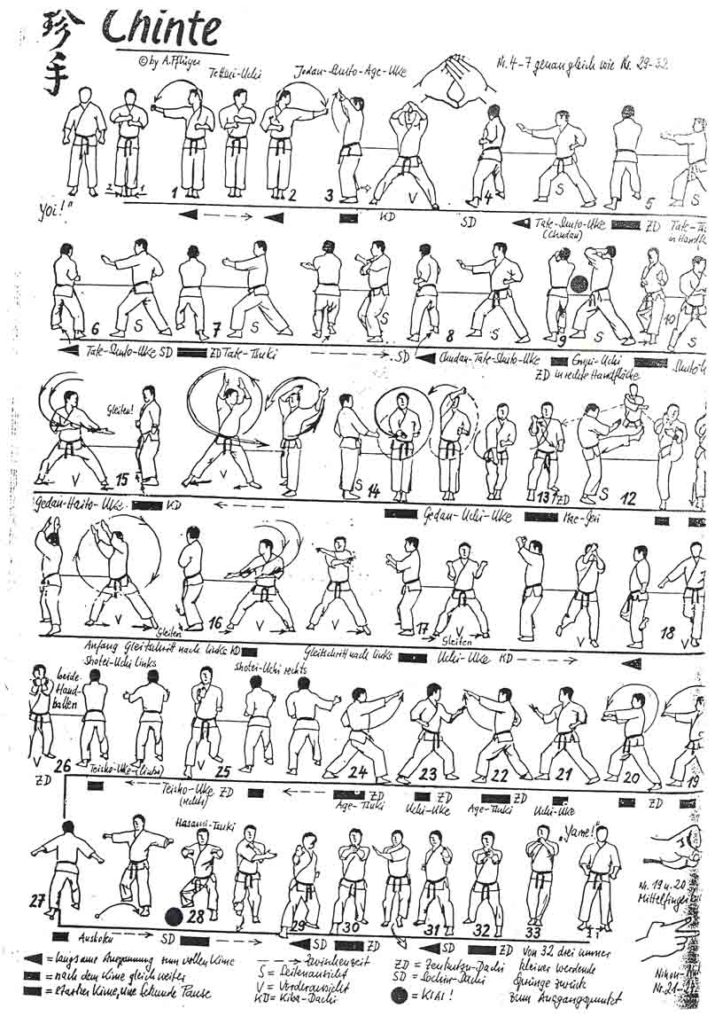As with most kata, there is quite a diverse opinion concerning Chinte's origin. Some say that this kata is very old, originating from China while others contend that Chinte stems from an Okinawan folk dance. Regardless of the kata's origins, many credit Yasutsune Itosu with the unveiling of this kata for modern practice. Chinte, meaning "Unusual Hands" or "Incredible Hands," gets its name from the array of unique and rarely seen hand techniques found within the kata. Those techniques not appearing in any other kata include: tate-zuki, nakadaka-ippon-ken, nihon-nukite, and hasami-zuki. Uncommon techniques include gedan-mawashi-haito, found in both Gojushiho kata, and kentsui-tate-mawashi-uchi which occurs only in one other kata, Heian Shodan. The three small hops at the end of the kata (yori-ashi) probably provide the most unusual aspect of this kata and seem radically different from all other Shotokan movements. Although seemingly very simple movements, they are extremely difficult for students to execute with grace and comfort. Application (bunkai) of these backward hops also tends to confuse students and instructors alike, usually resulting in some form of reverse engineering. Bunkai for these hopping movements range from simple retreating motions, to wrist locks, or even to a full nelson hold. Many argue that the hops were simply added later in order for the karateka to regain the starting point of the kata, especially for competition. Interestingly enough, Chinte is usually not chosen by men at tournament, leaving it to be performed almost exclusively by female competitors. Often labeled as a "women's kata," Chinte offers several defenses that are more suitable for someone of smaller size such as a woman, or even a child. Elbows, spear-hands, and palm-strikes can be very powerful techniques, even when thrown by a smaller individual, provided they are used to strike vital areas. Many of Chinte's techniques are circular or angular, requiring finesse and accuracy, not simply brute force.
When practicing Chinte, one should feel like the waves of the sea, beginning in calmness, then ebbing and flowing with the changing winds to become a tempest, and finally, with the last three hops, to be as the receding tide after the storm, bringing everything back to tranquility. The practice of this kata teaches the student to be fluid, to adjust to the opponent rather than to rigidly oppose force, yet to be capable of crashing into the adversary with the devastation of a tidal wave. Like many Shotokan kata, Gichin Funakoshi tried to change the name of this kata, renaming it Shoin (a place of study within a temple). This new name was never truly accepted by his students, and so Chinte remains as the kata's present name. However, Chinte's count has been changed from its original number of 33 (Best Karate #9) to a count of 32. Kiai have also been adjusted to movements #28 & #32 (instead of #9 & #32, Best Karate #9).







